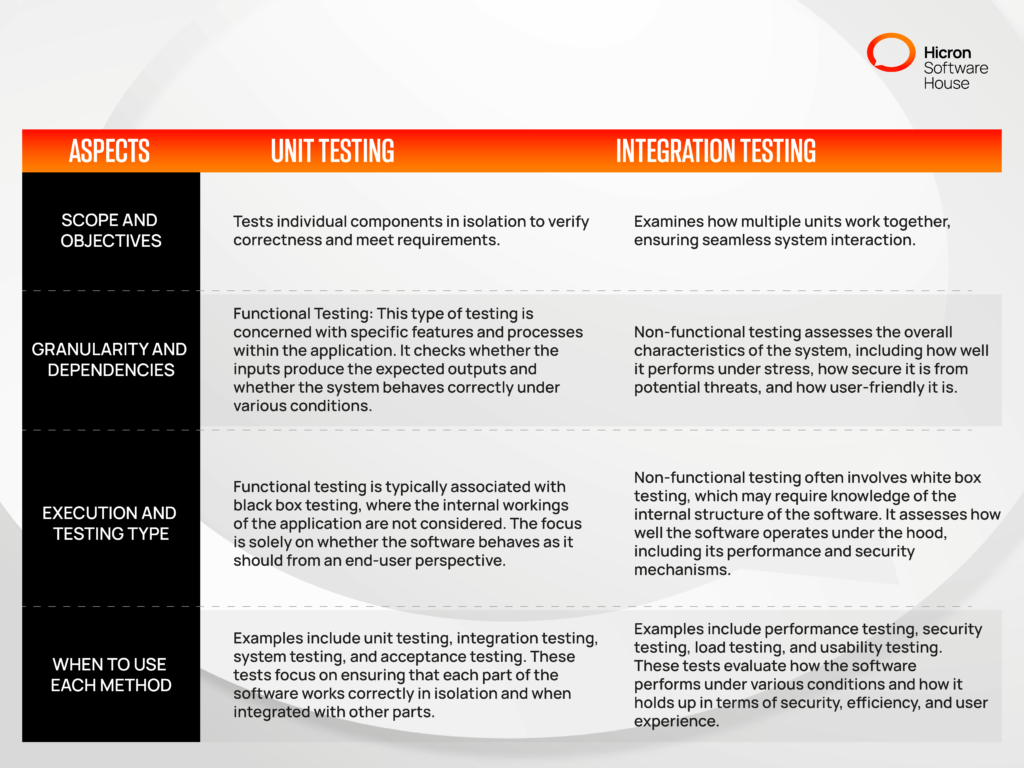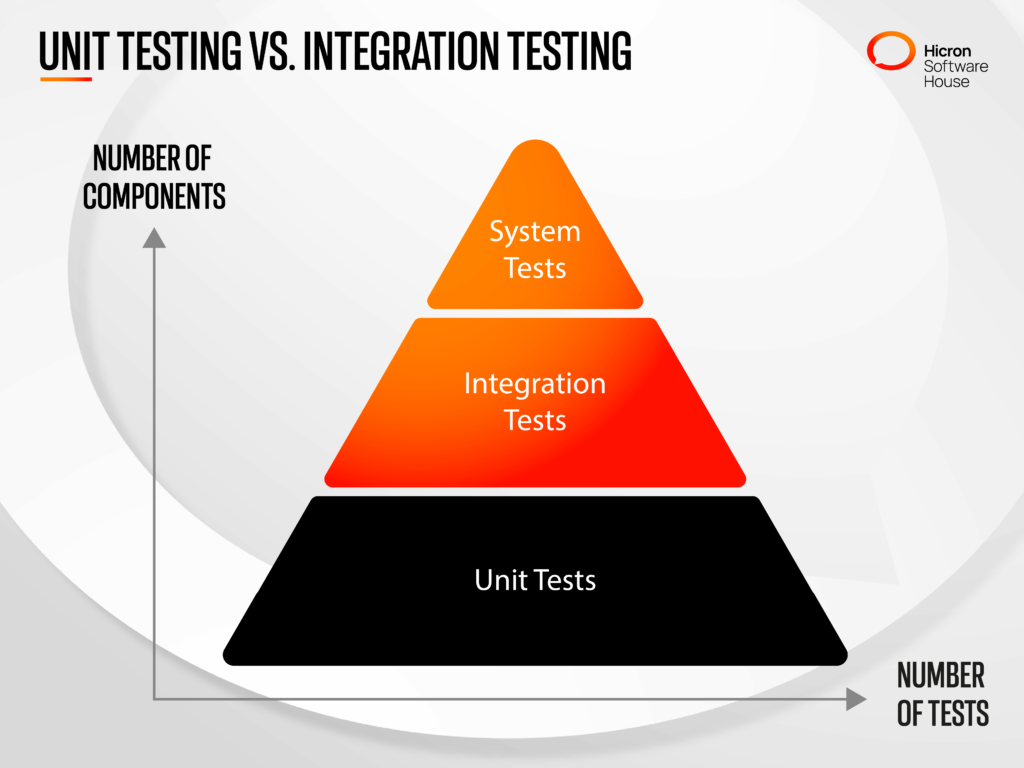Deep Dive into Manual Accessibility Testing Techniques
- April 18
- 4 min

It’s now more important than ever to provide customers with top-quality software solutions. Various types of software testing help achieve this goal. The top two standout ones are unit testing and integration testing.
Both aim to ensure software’s reliability and functionality; however, there are significant differences between them. Understanding these differences is essential so you can implement the right type of testing at the appropriate development stage.
To help you in this regard, we will discuss unit testing and integration testing, examining their key aspects and differences. Let’s get started.
Unit testing, as the name suggests, is a type of functional testing in which you test the smallest testable part of the software to make sure it’s performing as intended. It can be anything like a process, interface, or software module.
In simple words, unit software testing involves checking code in isolation to ascertain that it’s accurate and unaffected by interference from the software’s other coding infrastructure.
It’s usually performed by developers instead of a quality assurance team at the start of a software development life cycle.
Here are some use cases of the unit testing method that further help you understand their importance for your application:
The efficiency of small software components plays a crucial role in deciding its overall performance in the production environment. Therefore, it’s essential to ensure that all your software components are functioning correctly.
Unit testing does exactly that. It ensures the code behaves as expected under different conditions. This detailed checking helps identify flaws that would have been overlooked in higher-level testing.
Another reason to rely on unit testing is its ability to prevent regression issues. When you modify code, there is a high chance that new bugs might be introduced, which can be difficult to locate.
Since unit testing involves testing at the component level, it allows you to pinpoint the exact location of the regression. This precision enables quicker fixes, thereby improving the overall functionality of your application.
Unit testing also supports Test-Driven Development (TDD), in which developers first write unit tests before making the final code. They then write the minimal coding structure required to pass the tests. Once the test is successful, they can refactor the code to improve its functionality.
If you provide your customers with a software solution that occasionally has bugs and crashes, you will definitely earn a bad reputation and low revenue.
Nonetheless, unit testing takes away all such worries. How? Well, unit testing prompts software developers to test their codes as they write them.
This swift testing makes it easy for you to identify issues early on, allowing you to provide high-quality software to your customers. They feel satisfied and keep returning for more, boosting your overall revenue.
Unit tests also act as a safety net for refactoring. It’s because these tests check the functionality of individual components ensuring that the code still works even after changes.
If there’s a bug, the test will fail, alerting developers to take necessary action. This gives developers additional confidence, and they easily tend to refactor, knowing that unit tests will catch any issue, leading to cleaner and more reliable software.
Integration testing determines the connection or interaction between two software modules or components. The goal of integration testing is to ensure that there are no communication issues between the two connected parts of a system and that data flows smoothly.
It is performed after unit testing but before complete system testing. Compared to unit testing, which is performed by developers, integration testing is performed by the testing team as it’s more complex and time-consuming.
The use cases for this type of software testing vary from performance and load testing to system integration validation. Let’s discuss them in detail:
The main aim of integration testing is to verify interactions between multiple components. It enables you to monitor the connection between two different modules, such as how they communicate and whether there are issues like incompatibility or lags.
Integration testing is fundamental in system integration when connecting a new system to an existing one. It provides information about the compatibility of both systems and ensures that the old and new systems can talk to each other seamlessly. This prevents your business from investing in tech infrastructure and maintaining overall functionality.
Interface contract verification is another use case of integration testing. In this, you verify that the software module is translating and using the output of another module correctly. It also makes it easy for you to see if the software module is generating accurate output for subsequent models for a streamlined workflow and data exchange.
The most important use case of integration testing is that it’s critical for both load and performance testing. To put it simply, integration testing aids in applying different loads to a software system and checking if it works as expected.
For instance, you can simulate a scenario where multiple users access the system simultaneously, like during peak times. This will determine any bottlenecks, slowdowns, or crashes that might occur, helping you optimize the system performance accordingly.
In many cases, your software may have to connect with external systems like third-party services, APIs, or older software. Integration testing plays a crucial role in determining that the interactions between these components work smoothly.
For instance, when your system calls an external API, integration testing ensures that the data is correctly retrieved and processed. It also checks that your system can handle any unexpected responses or errors from these external services.
All in all, unit testing focuses on checking the functionality of one software component and its code. On the other hand, integration testing covers the communication and data exchange between two different components or modules of a software system and identifies any possible issues.

Here’s a detailed overview of the difference between unit testing and integration testing:
The major difference between unit testing and integration testing is in the level at which they are performed. Unit testing is a component-level approach where you test individual components of a system for issues. Contrarily, the integration testing interaction level is solely focused on verifying the interaction between two components.
Unit testing is a simpler technique that deals with one component at a time and has a small scope. In unit testing, you can easily pinpoint the exact location of the issue. On the other hand, integration testing has a wide scope and tests the interaction between two or more systems. Unfortunately, it’s complex, and finding the defect can be challenging.
When it comes to speed and efficiency, unit testing takes the lead, and for obvious reasons. In this method, you test an individual component in isolation, which is quick compared to testing multiple connected modules. You can easily identify issues, which further improves system efficiency.
The tools and technologies used for unit testing and integration testing are also different. For instance, NUnit, PHPUnit, and SimpleTest are the tools suitable for unit testing. While for running integration tests, you can rely on Citrus, Postman, Katalon, Tessy, and Protractor.
Although both unit testing and integration testing are different in scope and purpose, they also share some similarities, including:
Software developers often ask questions like, “Is it necessary to perform both unit and integration testing?” and “Isn’t unit testing enough?” How can I separate unit tests from integration tests? And the cycle goes on.
Remember, unit and integration testing complement each other and cannot be replaced.

You should first perform unit testing and, once done, move on to integration testing to see how individual components work together in the connection.
Unit testing and integration testing are essential for producing high-quality software. Nonetheless, if you struggle to perform these tests and want a reliable partner to take care of such a critical part of software development, look no further than Hicron Software House. We have an excellent team of Quality Assurance Experts and IT professionals who efficiently run unit and integration tests on your software to ensure it upholds the highest quality standards. Contact us today and take your business to a new level with reliable software!
